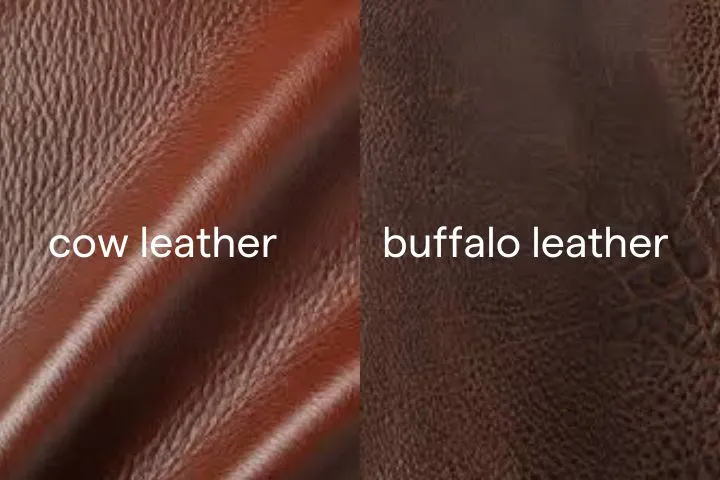Leather is one of the world’s most versatile and sought-after materials, forming the backbone of a global market worth over $400 billion. Yet, for both brands and consumers, its pricing can feel like a complete mystery. Why does one square foot of cowhide cost $3, while another costs $10? How can one leather bag be priced at $50 and a similar-looking one at $5,000? The cost of leather is not a single number; it’s a complex equation influenced by everything from the type of animal it came from to the chemicals used to tan it and the market trends of the day.
The cost of leather is determined by several key factors: the grade (full-grain is most expensive), the animal hide’s origin (cowhide is standard, exotics are premium), and the tanning method (eco-friendly vegetable-tanning costs more than chemical chrome-tanning). Prices can range from $1 per square foot for low-grade bonded leather to over $100 for exotic skins, making it essential to understand these variables to assess true value.
Navigating this landscape without a clear understanding of these factors can lead to costly mistakes—overpaying for low-quality material or choosing the wrong type of leather for your product. This guide is designed to be your definitive resource, demystifying the world of leather pricing. We will break down every factor that influences cost, provide real-world price comparisons for different types of leather, and offer expert tips on how to get the best possible value, whether you’re buying a single hide or sourcing in bulk. Ready to become an expert on the true cost of leather?
What Factors Influence the Cost of Leather?
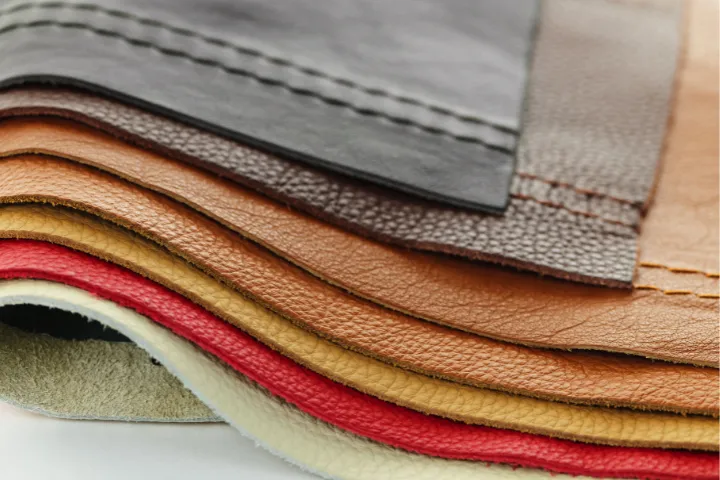 、
、
The cost of leather is influenced by a combination of factors. The most significant are the raw material (cowhide is cheaper, exotic skins are expensive), the leather grade (full-grain costs more than bonded), and the tanning method (vegetable-tanning is pricier than chrome-tanning). Market demand, supply chain logistics, and brand markup also play crucial roles in determining the final price per square foot.
The price tag on a piece of leather isn’t arbitrary. It’s the result of a long journey from raw hide to finished product, with costs accumulating at every step. Understanding these key variables is the first step to becoming a savvy leather buyer.
Raw Material and Hide Origins
The foundation of any leather product is the animal hide itself, and this is the first major factor in its cost. The type of animal, its origin, and how it was raised all play a significant role.
- Animal Type: Cowhide is the most common and generally the most affordable raw material due to its availability as a byproduct of the meat industry. In contrast, exotic leathers like crocodile, alligator, or ostrich come from animals raised specifically for their skins, making them exponentially more expensive.
- Sourcing Location: Hides from countries with large cattle industries, like Brazil or the USA, can be more cost-effective. However, the reputation of the source also matters; for example, hides from farms known for ethical treatment and high-quality animal husbandry will command a higher price.
Tanning and Processing Methods
Turning a raw hide into usable leather is a complex, resource-intensive process. The method used for tanning is a major cost driver.
- Vegetable-Tanned: This traditional, eco-friendly method uses natural plant tannins. It’s a slow, artisanal process that can take months, requiring skilled labor. As a result, vegetable-tanned leather is significantly more expensive, often costing between $4–$8 per square foot.
- Chrome-Tanned: This modern, chemical-based method is fast (it can be done in a day) and efficient, making it the standard for over 80% of the world’s leather. It produces a softer, more pliable leather at a lower cost, typically in the $2–$5 per square foot range.
- Finishing: Any additional processes like dyeing, embossing, or applying a special protective finish will add to the final cost, sometimes by as much as 20–50%.
Leather Grades and Quality
This is perhaps the most critical factor. The grade of leather, which refers to which layer of the hide is used, directly determines its strength, durability, and price. A belt made from full-grain leather might last a lifetime, while one made from bonded leather could fall apart in months.
The hierarchy is clear: full-grain is the most expensive and highest quality, followed by top-grain. Lower-quality grades like corrected-grain, genuine leather, and especially bonded leather (made from scraps) are significantly cheaper but offer a fraction of the durability.
Market Demand and Supply Chain
Like any commodity, leather prices are subject to global market forces. Fashion trends can cause a surge in demand for a specific type of leather, driving up its price. Global events, inflation, and logistical challenges also have a major impact. For example, rising shipping costs can add anywhere from $0.50 to $2 per square foot to the final price of imported leather.
Brand, Location, and Overhead
Where and from whom you buy the leather matters. A luxury brand like Hermès can have a markup of over 500% on its finished goods, a price that reflects marketing and brand prestige as much as the material itself. Similarly, Italian leather often carries a premium due to the country’s heritage of craftsmanship. Buying in bulk directly from a tannery will always be cheaper than buying small, pre-cut pieces from a retail craft store.
Environmental and Ethical Factors
As consumers become more conscious, sustainability has become a key factor in pricing. Leathers that are sourced from farms with high animal welfare standards or are certified by organizations like the Leather Working Group (LWG) often carry a premium of 10–30%. This extra cost reflects the investment in more responsible and transparent production methods.
Factors Table: Summary of Cost Influences
| Factor | Low-Cost Example | High-Cost Example | Average Cost Impact |
|---|---|---|---|
| Hide Origin | Cowhide | Alligator/Crocodile | Can increase price by 1000%+ |
| Grade | Bonded Leather (~$1/sq ft) | Full-Grain Leather (~$7/sq ft) | Can increase price by 500-700% |
| Tanning | Chrome-Tanned (~$3/sq ft) | Vegetable-Tanned (~$6/sq ft) | Can increase price by 50-100% |
| Sustainability | Standard Sourcing | LWG Certified / Ethically Farmed | Can add 10-30% to the cost |
How Much Does Leather Cost by Type?
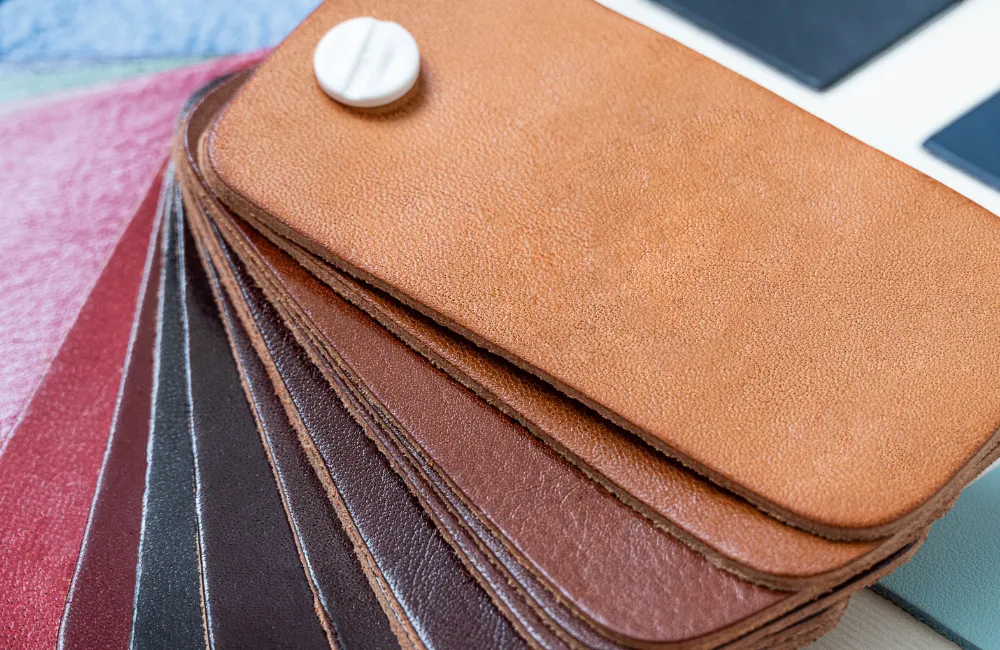
The cost of leather varies dramatically by type. Full-grain leather is the most expensive, averaging $5-$12 per square foot, due to its high quality. In contrast, lower grades like genuine leather are much cheaper at $2-$5 per square foot. The most affordable options are bonded leather and synthetics, often costing under $3 per square foot, while exotic leathers like crocodile can exceed $100 per square foot.
Now that we understand the factors that influence price, let’s look at some real-world numbers. The following are typical 2025 price ranges for different types of leather, both for retail (small, pre-cut pieces) and bulk (full or half hides) purchases.
Full-Grain Leather
As the highest quality grade, full-grain leather commands a premium price. It is prized for its natural texture, unmatched durability, and ability to develop a beautiful patina. This is the leather of choice for heirloom-quality goods.
- Retail Price: $5 – $12 per square foot
- Bulk Price: $3 – $8 per square foot
Top-Grain Leather
A very high-quality option that is slightly more affordable than full-grain, top-grain leather has been sanded to create a uniform surface. It’s a popular choice for high-end handbags, belts, and accessories.
- Retail Price: $4 – $10 per square foot
- Bulk Price: $2 – $6 per square foot
Genuine Leather
How much does genuine leather cost? Typically, between $2-$5 per square foot. However, it’s crucial to remember that this low price reflects its low quality. It is not a durable material and should be avoided for products that need to last.
This lower-grade leather is made from the inner layers of the hide and lacks the strength of the top layers.
- Retail Price: $2 – $5 per square foot
- Bulk Price: $1 – $3 per square foot
Corrected-Grain and Bonded Leather
These are the most budget-friendly options. Corrected-grain has an artificial pattern embossed on it, while bonded leather is made from shredded leather scraps. They are the least durable choices.
- Retail Price: $1 – $4 per square foot
- Bulk Price: $0.50 – $2 per square foot
Suede and Nubuck
These soft, textured leathers are created by sanding the hide. While beautiful, they are more delicate and require more maintenance than smooth leathers, which is reflected in their mid-range price.
- Retail Price: $3 – $8 per square foot
- Bulk Price: $2 – $5 per square foot
Exotic Leathers (e.g., Crocodile, Ostrich)
This is the pinnacle of luxury. Exotic leathers are priced based on their rarity, the complexity of the tanning process, and the high demand from luxury fashion houses. Their trade is also often regulated by CITES, which adds to the cost.
- Retail Price: $20 – $100+ per square foot
- Bulk Price: $15 – $80+ per square foot
Type Comparison Table
| Leather Type | Retail Price / sq ft | Bulk Price / sq ft | Key Characteristic | Durability |
|---|---|---|---|---|
| Full-Grain | $5 – $12 | $3 – $8 | Natural grain, develops patina | Excellent (20+ years) |
| Top-Grain | $4 – $10 | $2 – $6 | Smooth, uniform finish | Very Good (5-10 years) |
| Genuine Leather | $2 – $5 | $1 – $3 | Low-grade, often coated | Poor (1-3 years) |
| Bonded Leather | $1 – $4 | $0.50 – $2 | Made from leather scraps | Very Poor (<1 year) |
| Exotic (e.g., Crocodile) | $20 – $100+ | $15 – $80+ | Unique, luxurious texture | Good (with care) |
Leather Cost by Country and Region
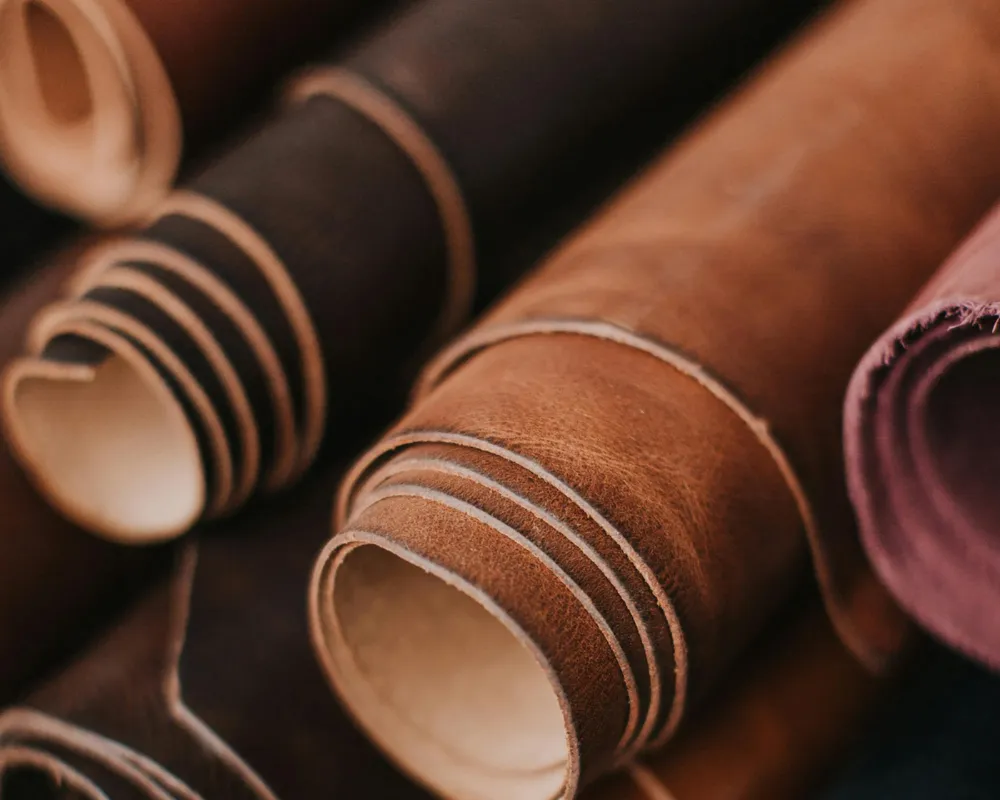
The cost of leather varies significantly by region. Italian leather commands the highest premium ($6-$15/sq ft) due to its reputation for luxury craftsmanship. USA leather offers excellent quality at a more moderate price ($3-$8/sq ft). South American and Asian leathers are the most budget-friendly sources for raw hides ($1-$6/sq ft), though quality can be inconsistent. The origin is a key indicator of both price and quality.
Where a hide is from and where it is tanned has a massive impact on its final cost. Some countries have a centuries-old heritage of craftsmanship that adds a premium to their products, while others are known for large-scale, cost-effective production.
Italian Leather
How much is Italian leather? It is the most famous and often the most expensive leather in the world. Its premium price ($6–$15/sq ft retail) is a reflection of its reputation for unparalleled quality, luxurious feel, and the rich heritage of its tanneries, especially those in the Tuscany region that specialize in artisanal vegetable-tanning.
USA and North American Leather
American leather is prized for its durability and the high quality of its raw cowhides. With renowned tanneries like Horween, the USA is a source for tough, characterful leathers that are often used in heritage and workwear brands. It represents a strong balance of quality and value, typically costing $3–$8/sq ft retail.
South American Leather (e.g., Brazil/Argentina)
As two of the world’s largest cattle producers, Brazil and Argentina are major sources of affordable raw hides. The leather is known for its value, but brands must be diligent in vetting suppliers to ensure ethical and sustainable practices. It’s a cost-effective option, usually priced at $2–$6/sq ft retail.
Asian Leather (e.g., India/China)
Asia is a powerhouse of bulk leather production, offering some of the most competitive prices on the market ($1–$5/sq ft). While many excellent, high-tech tanneries operate in the region, the quality can be highly variable. It is a popular source for large-scale manufacturing where cost is a primary driver.
Cheapest Countries to Buy Leather
For those sourcing on a tight budget, countries like Morocco, Turkey, and Bangladesh offer some of the lowest prices in the world. In local markets, it’s possible to find basic leather for as little as $1–$4 per square foot, though quality and consistency will vary greatly.
Regional Price Table
| Region | Average Retail Cost / sq ft | Pros | Cons |
|---|---|---|---|
| Italy | $6 – $15+ | Unmatched luxury, heritage, quality | Most expensive |
| USA | $3 – $8 | Durable, high-quality hides, ethical | Mid-to-high price range |
| South America | $2 – $6 | Cost-effective for raw hides | Quality and ethics can be inconsistent |
| Asia | $1 – $5 | Very affordable, ideal for bulk | Quality can be highly variable |
How Much Does Leather Cost in Bulk vs. Retail?
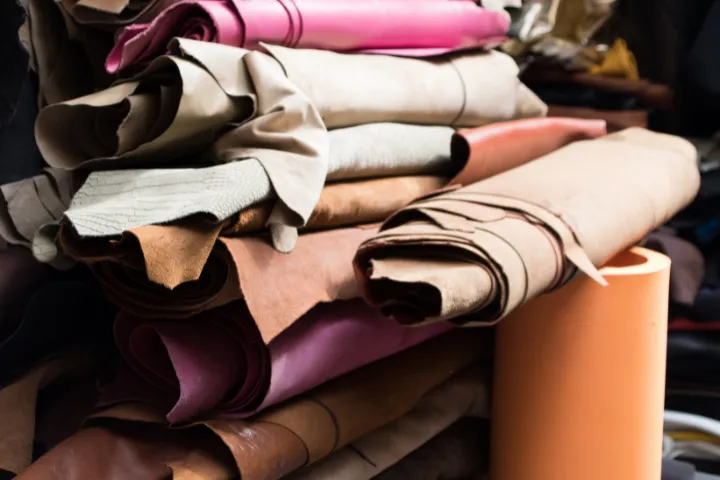
Buying leather in bulk from a tannery or large distributor is significantly cheaper per square foot ($2-$6) than buying it retail ($5-$20). Bulk purchases require a high minimum order (often 50-100 sq ft), making it ideal for businesses, while retail offers smaller, pre-cut pieces perfect for hobbyists. The trade-off is between a lower unit cost for volume and a higher unit cost for convenience.
The price you pay for leather depends heavily on *how* you buy it. The difference between wholesale (bulk) and retail pricing is substantial, and understanding this is key for both businesses and hobbyists.
Bulk Pricing Breakdown
How much does leather cost in bulk? This is the pricing model for businesses and manufacturers. You don’t buy small squares; you buy by the hide or side. A full cowhide can range from 40 to 60 square feet. The price per square foot is much lower, but the initial investment is higher due to the volume.
- Price Range: Typically $2 to $6 per square foot for good quality cowhide.
- Minimum Orders: Suppliers usually have a minimum order quantity (MOQ), often starting at a half-hide (around 25 sq ft) or a full hide.
- Volume Discounts: Significant discounts of 20-50% are often available for very large orders.
Retail Pricing
Retail pricing is for hobbyists or those needing small amounts of leather. Craft stores like Tandy Leather or online retailers sell pre-cut pieces, panels, or smaller remnants. While convenient, you pay a significant premium for this service.
- Price Range: Typically $5 to $20 per square foot, depending on the type and quality.
- No Minimums: You can buy a single small piece, making it accessible for small projects.
Where to Buy Bulk
For businesses looking to source in bulk, the best prices come from going as close to the source as possible. This includes buying directly from tanneries, working with large leather distributors like Weaver Leather Supply, or using B2B platforms like Alibaba for international sourcing. These suppliers are set up to handle large, commercial orders.
Cost-Saving Tips for Bulk
Even when buying in bulk, there are ways to save. Don’t be afraid to negotiate prices on large orders. You can also ask about purchasing remnants or off-cuts—smaller, irregular pieces left over from larger cuttings—which are often sold at a steep discount.
Bulk vs. Retail Table
| Factor | Bulk Purchase | Retail Purchase |
|---|---|---|
| Price per sq ft | Low ($2 – $6) | High ($5 – $20) |
| Minimum Order | High (often 25-50+ sq ft) | None |
| Ideal Buyer | Businesses, Manufacturers | Hobbyists, Crafters |
How Much Does Leather Cost for Bags, Wallets, and Accessories?
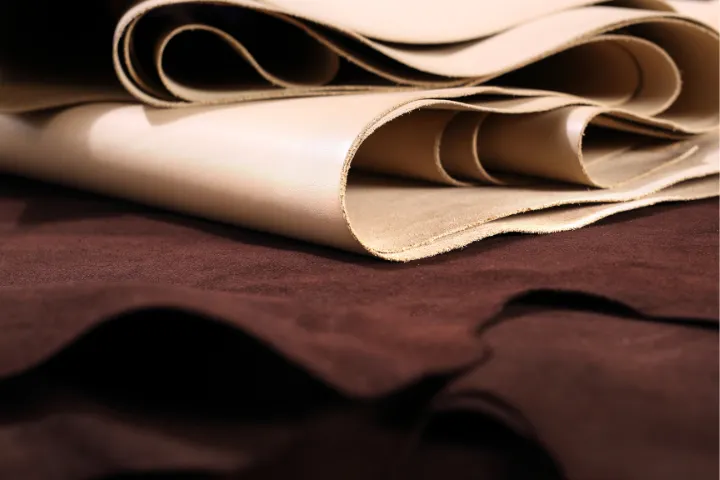
The material cost for a leather product depends on its size and the leather grade. A medium handbag might require 3-4 sq ft of leather, costing $12-$32 in materials. A wallet needs about 1 sq ft ($3-$8), and a belt needs 2-3 sq ft ($6-$24). Remember, this is only the material cost; the final price of a finished good is significantly higher due to labor, hardware, and brand markup.
Understanding the price per square foot is one thing, but how does that translate into the cost of making a finished product? Here are some general estimates for the amount of leather needed for common accessories.
Estimating Material Cost for a Handbag
A medium-sized tote bag requires a surprising amount of leather, usually between 3 to 4 square feet, accounting for the body, straps, and any interior pockets. The material cost can therefore vary dramatically:
- Using mid-range bulk leather ($4/sq ft): The material cost would be approximately $12 – $16.
- Using premium full-grain leather ($8/sq ft): The material cost would jump to $24 – $32.
Calculating the Leather Cost for a Wallet
A standard bifold wallet is much smaller and more efficient to produce. It typically requires about 1 square foot of leather. This makes wallets a great product for utilizing smaller, high-quality pieces of hide.
- Using mid-range bulk leather ($4/sq ft): The material cost would be around $4.
- Using premium full-grain leather ($8/sq ft): The material cost would be around $8.
Factoring Leather Costs into Belt Production
A single belt strap is long and narrow, which can lead to less efficient use of a hide compared to other goods. A typical belt requires between 2 to 3 square feet of high-quality, low-stretch leather, preferably from the butt or shoulder cut.
- Using mid-range bulk leather ($4/sq ft): The material cost would be approximately $8 – $12.
- Using premium full-grain leather ($8/sq ft): The material cost would be $16 – $24.
How Hardware and Labor Influence the Final Product Cost
It is absolutely critical to remember that the cost of the leather is only one component of a finished product’s price. For many items, it’s not even the largest component.
The final price you pay for a bag or wallet also includes the cost of hardware (zippers, buckles, rivets), the skilled labor required for cutting and stitching, and the brand’s own markup for design, marketing, and profit. A simple leather tote might have $15 worth of leather, but the final retail price could be $200 or more once these other factors are included.
Why is Leather Expensive (or Cheap)? Breaking Down the Value
Leather’s price reflects its value. It’s expensive due to high production costs, including skilled labor for tanning and crafting, and the price of quality raw hides. In contrast, it can be cheap if low-grade materials like bonded leather are used. Ultimately, a high-quality leather product is a long-term investment whose durability provides better value over time than frequently replaced, cheaper alternatives.
The vast price range of leather products often leaves consumers wondering: what am I actually paying for? The answer lies in a combination of tangible production costs and intangible brand value.
Production Costs and Labor
High-quality leather is expensive because it is difficult and time-consuming to produce. The journey from raw hide to finished product involves many stages, each requiring skilled labor.
- Tanning: This is a labor-intensive process that can take weeks or months for premium methods like vegetable tanning.
- Craftsmanship: Turning a hide into a finished good requires skilled artisans for cutting, stitching, and finishing. This craftsmanship can add 30-50% to the product’s base cost.
Supply and Demand Dynamics
Basic economics plays a huge role. Cowhide is abundant as a byproduct of the global meat industry, which keeps its base price relatively stable and low (around $2-$5/sq ft). In contrast, the supply of exotic skins like crocodile is extremely limited, while demand from the luxury sector is high. This scarcity is what drives the price of an alligator hide into the thousands of dollars.
Sustainability Premiums
As consumers demand more ethical and eco-friendly products, manufacturers are investing in sustainable practices. These methods, such as using cleaner chemicals or building expensive water treatment facilities, cost more. This “sustainability premium,” often adding 10-20% to the cost, is a price many consumers are willing to pay for a more responsible product.
Brand and Markup Effects
For luxury goods, the material cost is only a tiny fraction of the final price. The rest is the brand’s markup, which covers design, marketing, retail overhead, and, of course, profit. A brand like Hermès can have a markup of 500% or more.
Is Leather Worth the Investment?
Is real leather expensive? Yes, high-quality leather is. But it is often worth the investment. A full-grain leather bag that lasts 20 years offers far better long-term value than a synthetic bag that peels after two. When you calculate the “cost per wear,” the durable, high-quality item is almost always the more economical choice.
Cheapest Leather Options
What is the cheapest type of leather? Bonded leather and low-grade PU synthetics are the cheapest, often costing under $2/sq ft. These materials, typically sourced from large-scale producers in Asia, allow for very low-cost finished goods but offer extremely poor durability.
How Can Brands Reduce Leather Costs Without Compromising Quality?
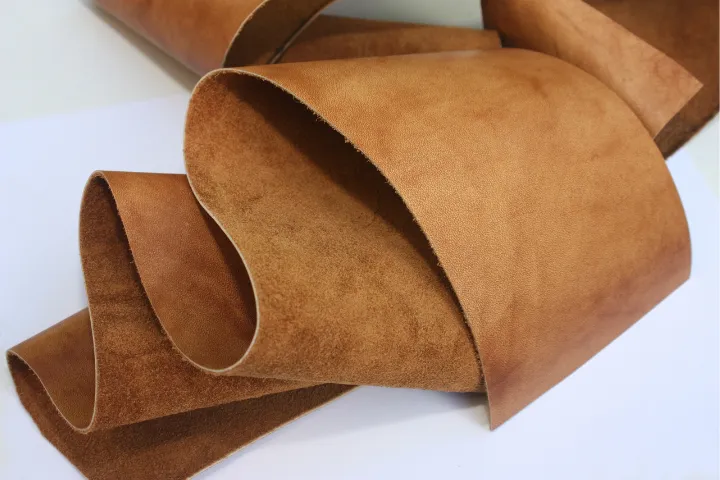
Brands can reduce leather costs without sacrificing quality through several key strategies. Strategic material sourcing from cost-effective regions is crucial. Optimizing hide yield with efficient cutting patterns minimizes waste. Partnering with a manufacturer that offers factory-direct pricing, like Hoplok Leather, eliminates middleman costs. Finally, balancing the complexity of hardware and construction can significantly lower labor costs.
For brands, managing the cost of leather is a critical balancing act. You want to offer a high-quality product at a competitive price. Here are some expert strategies for achieving that balance.
Strategic Material Sourcing
Where you get your leather from matters. While Italian leather is luxurious, high-quality hides from South America or the USA can offer a much better balance of quality and cost. An experienced manufacturing partner can be invaluable here.
- Global Sourcing Expertise: A partner with a global sourcing network, like Hoplok Leather, can procure high-quality hides from cost-effective regions like Brazil or Pakistan, passing those savings on to you.
- Material Alternatives: Consider using high-quality top-grain leather instead of full-grain for certain products. It offers a similar look and excellent durability at a lower price point.
Optimizing Hide Yield and Cutting Patterns
Waste is a major cost driver in leather production. Because hides are irregularly shaped and have natural imperfections, a significant portion can be discarded during the cutting process. A skilled manufacturer can minimize this waste.
- Efficient Nesting: Using advanced software, pattern pieces can be “nested” together on the hide to maximize the amount of usable material, significantly reducing the cost per unit.
- Smart Design: Designing products with the natural shape of a hide in mind can also improve yield. For example, using smaller leather panels instead of one large one can allow cutters to work around imperfections more easily.
Choosing the Right Manufacturing Partner
The single most effective way to reduce costs is to eliminate the middleman. Working directly with a factory instead of going through a trading company or agent can save you 20-30% or more.
A manufacturer with end-to-end, in-house production capabilities has greater control over their costs and can offer more competitive, factory-direct pricing. Look for partners who are transparent about their pricing and can offer a full suite of services, from sourcing to logistics.
Balancing Hardware and Construction Complexity
Remember that leather is only one part of the final cost. The complexity of your product’s design and the hardware you choose can have a massive impact. Simplifying a design to reduce the number of seams or choosing high-quality but standard hardware instead of fully custom pieces can significantly lower the labor and component costs without compromising the perceived value of the final product.
Where to Buy Leather: Best Sources and Tips
The best place to buy leather depends on your needs. For hobbyists, online retailers like Tandy Leather offer convenience and small quantities. For businesses needing bulk, buying directly from tanneries or large distributors like Weaver Leather Supply provides the best price. Always request samples to verify quality, and for the lowest prices, consider exploring local markets in countries like Morocco or Turkey.
Knowing where to find the right leather at the right price is crucial. The best source depends on whether you’re a hobbyist buying a few square feet or a business sourcing hundreds of hides.
Online Retailers and Tanneries
For convenience and a wide selection, online retailers are an excellent starting point. These sources are ideal for both beginners and experienced crafters.
- Retail Craft Stores: Companies like Tandy Leather ($5-$15/sq ft) are perfect for buying smaller, pre-cut pieces and getting expert advice.
- Large Distributors: Suppliers like Weaver Leather Supply ($3-$8/sq ft) offer a huge selection of full hides and sides, catering to both small businesses and serious hobbyists.
- Direct from Tanneries: Many famous tanneries, including some in Italy, now sell directly to the public online, offering premium quality at a fair price ($6-$12/sq ft).
Local Markets and Wholesalers
For those willing to hunt for a bargain, local markets and wholesalers can be a treasure trove. In countries known for their leather production, like Morocco or Turkey, you can often find high-quality leather at very low prices ($1-$4/sq ft) by buying directly from local artisans and negotiating. In the US, look for local leather wholesalers who may offer better prices than national retail chains.
Bulk Suppliers for Businesses
For brands and manufacturers, sourcing in bulk is essential for managing costs. The primary channels include:
- Direct Tannery Relationships: Establishing a direct relationship with a tannery like Horween is the best way to ensure consistent quality and access to custom runs.
- International B2B Platforms: Websites like Alibaba can connect you with suppliers in Asia offering very competitive bulk pricing ($1-$3/sq ft), but require careful vetting.
Tips for Smart Buying
No matter where you buy from, the golden rule is to always request a sample first. Holding the leather in your hands is the only way to truly judge its quality, feel, and color before committing to a larger purchase.
Always check for certifications to ensure ethical and sustainable sourcing, and don’t be afraid to ask questions about the leather’s grade and origin. When buying in person, inspect the hide for excessive flaws and check the consistency of its thickness.
Why Should You Choose Hoplok Leather for Your Custom Leather Products?
Hoplok Leather is the ideal manufacturing partner for brands seeking a balance of quality and value. With over 22 years of experience, they offer factory-direct pricing by leveraging their global sourcing network and efficient production facilities. Their expertise in cost management, flexible MOQs, and rapid prototyping allows brands to reduce expenses without ever compromising on the high-quality craftsmanship their customers expect.

Blending Global Cost-Effectiveness with American Quality Standards
Hoplok Leather operates with a unique global model that offers brands the best of both worlds. Our production facilities in Cambodia and China provide significant cost advantages, while our US-based design and management team ensures every product meets the high standards of quality and style demanded by the American market. This hybrid approach allows us to deliver premium products at a competitive price point.
Expertise in Sourcing and Cost Management
With over two decades in the industry, we have cultivated an extensive global network of tanneries and material suppliers. This allows us to source the perfect leather for your product and budget, from cost-effective South American hides to luxurious Italian leathers. Our experience in optimizing hide yield and managing production costs means we can help you create a superior product while protecting your profit margins.
Flexible MOQs and Rapid Prototyping for Value-Driven Brands
We understand the challenges facing modern brands, especially startups and SMEs. That’s why we offer flexible MOQs that reduce your financial risk and allow you to test new products with smaller initial orders. Our rapid prototyping service (2–7 days) helps you move from concept to sample quickly, saving you valuable time and development costs. This agility is a core part of the value we provide to our partners.
A Commitment to Transparent, Factory-Direct Pricing
By working directly with Hoplok Leather, you eliminate the layers of agents and middlemen that inflate costs. We offer transparent, factory-direct pricing that is honest and competitive, ensuring you get the best possible value for your investment.
Our goal is to build long-term partnerships based on trust and mutual success. We provide free design consultations to help you optimize your product for both quality and cost-effectiveness from the very beginning.
Frequently Asked Questions
Common questions about leather costs focus on price per square foot and value. The cost ranges from under $2/sq ft for bonded leather to over $100/sq ft for exotics. “Genuine leather” is a low-quality, cheap option ($2-$5/sq ft). Italian leather is expensive ($6-$15/sq ft) due to its heritage. While high-quality real leather has a high upfront cost, its longevity makes it a better long-term investment.
How much does leather cost per square foot?
The cost varies widely. Budget-friendly bonded or genuine leather can be $1-$5 per square foot. High-quality full-grain cowhide is typically $5-$12. Premium Italian or exotic leathers can range from $15 to over $100 per square foot.
Is leather expensive?
High-quality, full-grain leather is expensive upfront due to the complex and lengthy process required to produce it. However, its extreme durability often makes it a better long-term value than cheaper materials that need frequent replacement.
What is the cheapest type of leather?
The cheapest type of leather is bonded leather, which is made from shredded leather scraps and polyurethane. It can cost as little as $1 per square foot but has very poor durability.
How much does genuine leather cost?
Genuine leather typically costs between $2 and $5 per square foot. It’s important to remember that this is a low-grade leather, and its low price reflects its poor quality and short lifespan.
What factors affect leather prices?
The main factors are the animal hide (cow vs. exotic), the leather grade (full-grain vs. bonded), the tanning method (vegetable vs. chrome), market demand, and supply chain costs.
How much is Italian leather?
Italian leather is a premium product, typically costing between $6 and $15 per square foot or more, depending on the tannery, grade, and finish.
How much does leather cost in bulk?
Buying in bulk significantly reduces the price. A good quality cowhide can cost between $2 and $6 per square foot when purchased in large quantities directly from a distributor or tannery.
Conclusion
The cost of leather is a direct reflection of its journey. From the quality of the raw hide and the craftsmanship of the tannery to the final cut and finish, every step adds to its value. By understanding the differences between grades like full-grain and “genuine,” and appreciating the impact of tanning methods, you can now navigate the market as an informed buyer, capable of identifying true quality and making smart investments. The key takeaway is that while high-quality leather has a higher upfront cost, its longevity and durability almost always provide superior value in the long run.
At Hoplok Leather, we live and breathe these details. With over 22 years of experience, we are experts in sourcing the perfect leather to meet any brand’s specific quality and cost requirements. We leverage our global network and factory-direct model to provide our partners with unparalleled value, ensuring every product we create is a testament to quality craftsmanship. If you’re ready to build a product line that delivers on both quality and value, we’re here to help.
Ready to Source the Perfect Leather for Your Brand?
Don’t navigate the complexities of leather pricing alone. Partner with an expert. At Hoplok Leather, we offer free design and material consultations to help you find the ideal balance of quality, cost, and style for your custom leather products. Let our 22 years of experience work for you.



